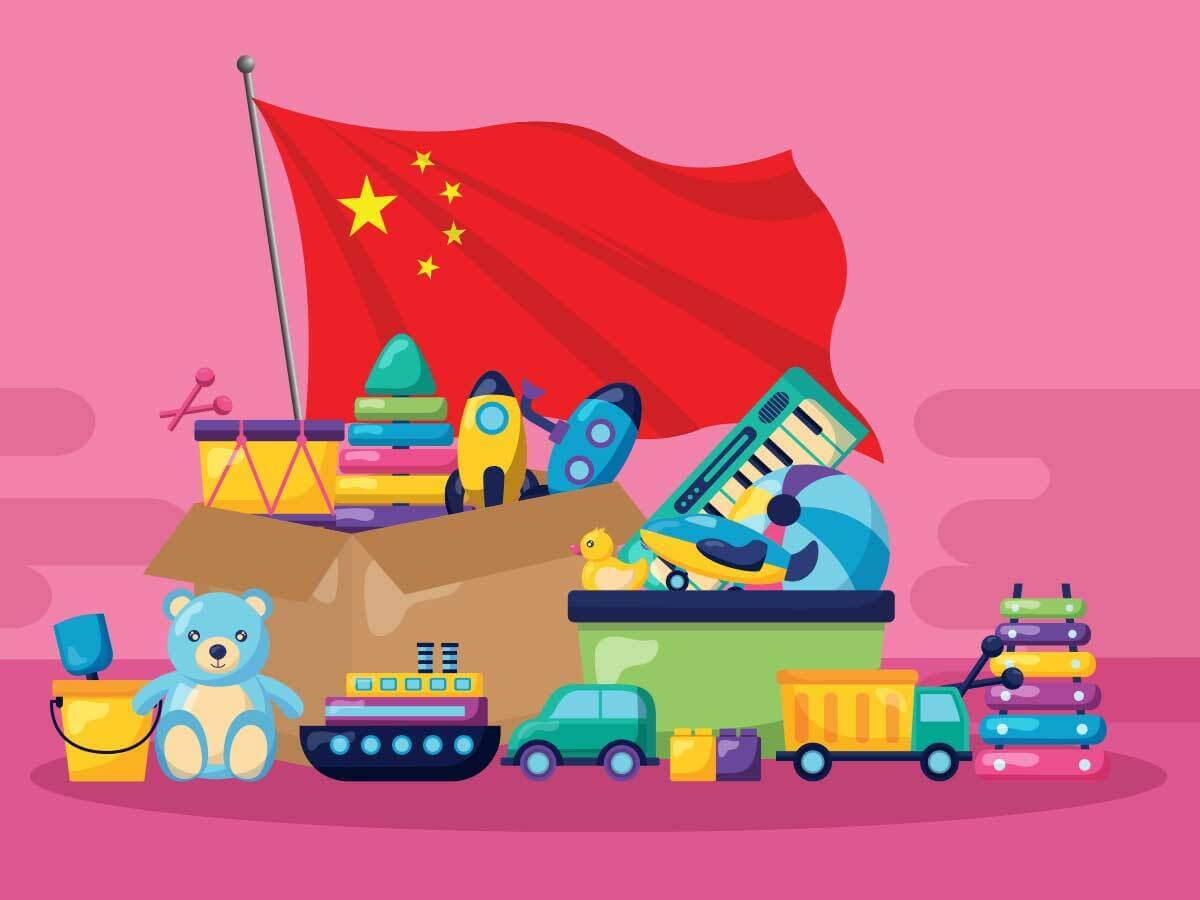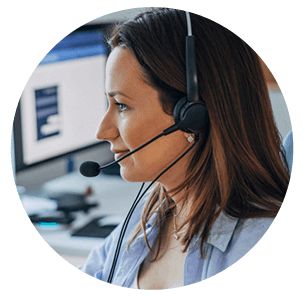
If you want to import toys from China, you’ll find that it’s more than just child’s play. There are numerous regulations placed on these items to ensure they’re safe for children.
Key Takeaways:
At USA Customs Clearance, we have an experienced team with extensive knowledge about importing. We’re going to use our expertise to help you through the steps required when importing toys.
The Consumer Product Safety Commission (CPSC) is the primary federal agency that regulates the import of toys. This agency administers the Consumer Product Safety Improvement Act (CPSIA), which is a consumer product safety law. Section 106 of the CPSIA is where regulations for toys are located.
Toys and children’s products regulated by the CPSIA include:
When importing toys from abroad, you will be responsible for making sure toys and children’s products comply with federal mandates.
According to rules set in place by the CPSIA, all toys and children’s products are subject to these four regulations:
The CPSIA has rules in place regarding the use of lead and phthalates in toys. Only a small quantity of phthalates are permitted in these products. This includes:
Phthalates are commonly used in plastics to make them more flexible and harder to break. According to the Centers for Disease Control (CDC), phthalates are commonly used in materials called polyvinyl chloride plastics. These plastics are used to make items such as plastic packaging, inflatable toys and other children’s toys.
The CPSIA restricts the use of lead in toys to 100 parts per million (PPM). PPM is essentially how many parts a certain molecule or compound makes up one million parts in a whole solution.
Lead is a carcinogenic material that is strictly limited for use in toys. Children can be exposed to lead in toys after putting them in their mouths or touching the toys with their hands.
Additionally, mechanical regulations are in place to make sure the physical aspects of a toy are safe for children. Seams and plastic parts are among parts regulated for safety. The American Society for Testing and Materials (ASTM) sets international standards for product safety.
The ASTM F963 is the process followed to meet safety standards. Certified compliance with ASTM rules is required for toys and children’s products. We’ll dive deeper into these regulations below.
According to the CPSC, third-party testing is required for toys designed for use by children under age 12. Testing must occur at a laboratory approved by the CPSC These labs will use a variety of methods to test toys for lead.
CPSC accredited labs will use an inductively coupled plasma (ICP) spectrometer or X-ray fluorescence (XRF) technology to test for lead in toy imports. The method that’s used can vary based on the other types of materials that comprise the toy.
To test for phthalates, CSPC labs utilize a method called Gas Chromatography-Mass Spectrometry (GC-MS).
Don’t worry if you’re afraid your toy imports will arrive in the U.S. before they’re tested. There are numerous CPSC approved laboratories located all around the world, including many in China.
Other approved testing labs are located in:
Upon successful completion, approved products will receive a CPC from the firm that conducted the test.
The ASTM F963 sets the standard for toy safety and became mandatory after April 30, 2017. The ASTM toy safety standard addresses many of the health issues and hazards identified with toys.
Compliance with ASTM F963 used to be up to the manufacturer’s discretion, but recent CPSIA mandates require that all toys on the U.S. market comply with these rules.
According to the ASTM F963, third-party testing will only be required for specific toys or toys that are made with certain types of materials. I’ve included a list of some of the items that will be subject to these testing requirements.
Reminder, CPSC testing and certification requirements apply to products intended for children under 12 years of age, while ASTM F963 applies to products intended for children under 14 years of age.
Therefore, any toys you plan to import that are intended for 13-year-olds will only be subject to ASTM F963. This means you won’t have to worry about following CPSC testing rules. Despite this convenient exception, it’s unlikely many products you plan to import will fall into this category.
After any required testing, approved products will receive a CPC. Once you know the requirements and safety standards, you can begin searching suppliers.
All toys imported from China must have a certified tracking label on the product or on the product’s packaging. This label must supply certain product information, including:
The tracking label information should be visible and legible. Following CSPC’s label rules will help improve response to recalls that could occur in the future. ASTM F963 requires warning statements for applicable products.
It should have the following information:
Toys and games should have a ‘small part’ warning label if they’re intended for children between the ages of three and six.
The label should have the following:
Ensuring your products have the right labels will guarantee their safety and ensure you won’t run into any compliance problems.

Don't let customs clearance hold you back. Our team of experts is ready to guide you through the process with ease. Call us at (855) 912-0406 to discuss your needs and find the perfect solution.
The first step is finding a supplier. Different toys are generally manufactured in different regions of China. The Chenghai District, located in the city of Shantou, Guangdong Province, is one of the leading manufacturing areas and exporters of toys worldwide.
Toys commonly manufactured in and exported from the Chenghai District include:
Other common locations for toy manufacturers include Yangzhou, Qingdao, Yongjia, and Yiwu.
These cities are located on major sea and river ports to make export and transport simple. There are a few ways you can purchase toys from China. First, you can buy toys wholesale at annual toy fairs. The Chenghai Toy Fair is held in the late spring.
The Canton Fair has been around since 1957 and features baby toys, action toys, plush and cloth toys, dolls and more. Additionally, the Mega Show held in Hong Kong each fall showcases premium toys and games. This fair is held in different phases during each year.
The specific dates for this show may change each year. If you are unable to go to China to meet with Chinese toy suppliers, you might want to use a sourcing agent. A sourcing agent will reach out to a variety of suppliers and/or manufacturers. Then he or she will find the toys you need, buy them, and make a commission on the sale.
You can also use online trading companies like Alibaba.com to purchase wholesale. Alibaba presents millions of products available to wholesalers and consumers directly from the source. Online global trade is a growing sector and many small businesses are choosing to work with online vendors for toys wholesale.
The U.S. imports its toys from numerous countries, but most come from China. I’ve provided some data on the value of toy and game imports by country of origin.

Regardless of which toys you decide to buy and how you decide to buy them, you might need to consider the wholesaler’s minimum order quantity (MOQ). Some toy manufacturers and wholesalers have a high MOQ; others have a low MOQ.
It is wise to ship toys in bulk to save on costs. Toys and other products you buy from China are usually shipped via sea freight.
Cargo shipped overseas is often held in 20 by 40 feet cargo containers. A full cargo container load holds approximately 800 square feet or 2400 cubic feet. A 40-foot container has a payload capacity of approximately 61,000 lbs. That’s a lot of room for toys!
Is your cargo at least 5 pallets? If so, a good option is to ship through full cargo load (FCL) shipping. If your cargo is of a smaller volume, the most ideal option might be through loose cargo load (LCL) shipping. This means your cargo will share container space with other shipments. You might share cargo space with other similar wares or dry goods.
Many international ocean carriers have limited liability insurance for cargo damage. Because your imported toys are likely valued at more, you will likely want to have cargo insurance. Your insurance company or your Licensed Customs Broker can likely help you with protecting your shipment.
After the toys you are importing from China arrive at a U.S. seaport, it’ll be moved out of the facility by rail or truck. If you’d prefer to receive your goods in the container they traveled in, then rail is often the best mode of transport to use.
You can also use drayage services, which will bring your cargo to a warehouse near the port to be unloaded.
When importing, you should think about the time it takes for the manufacturer or wholesaler to prepare your order and the transit time. Generally speaking, transit time between the U.S. and China takes two weeks to two months, not including customs clearance time.
This does not include delays due to weather and other unseen circumstances. With this in mind, you should estimate that your shipment of imported toys will arrive in 2-3 months.
If you are shipping small amounts of toys, you might use air freight. Air freight is usually much more expensive but can be much faster. Working with your Licensed Customs Broker can help you decide which option is best for you.
Your Licensed Customs Broker can help you ensure that you have all the proper documents in place when importing toys. The import document paperwork for toys generally includes:
If you’re going to use insurance to protect your cargo, you’ll need to provide proof of coverage.
Learn more about the paperwork you need in our article on export and import documents.
Yes, electronic toys can be imported into the United States from China. They will be subject to the CPSIA and ASTM F963 regulations that we’ve already discussed. These products will also be subject to regulations enforced by the Federal Communications Commission (FCC) and Food and Drug Administration (FDA).
High-tech and electronic toys have become more popular in recent years. Toys like RC cars and helicopters, cameras, basic coding toys, kids’ tablets and drones are becoming more popular than ever and are staples in almost every household with children. Many of these toys are imported from China.
The Federal Communications Commission (FCC) regulates all toys that transmit radio frequencies.
Examples of children’s products that use this technology include:
The FCC has 11 distinct conditions for importing radio frequency devices. If the toys you plan to import are toys that emit radio frequencies, you’ll need to ensure they meet one of these conditions.
Toys that feature Bluetooth speakers, tablets that connect to WiFi, radios and walkie-talkies are all examples of toys that must receive certification from the FCC. Other items like earphones, headphones, power packs and toys with printed circuit boards must also be certified by the FCC before they can be imported from China into the U.S.
Additionally, the FDA protects the safety and health of all U.S. consumers, including children. The FDA does more than oversee food and drugs. In fact, the FDA also manages and inspects imported electronic toys and products. They ensure electronic imports are safe and effective.
All electronic imports that emit radiation are subject to the FDA’s Electronic Product Radiation Control (ERC). General require ments for these devices can be found in the 21 CFR 1000-1005.
Importers will need to submit a Form FDA 2877 to a local FDA district office. You’ll also need to electronically submit entry information for their product through Customs and Border Protection’s (CBP) Automated Commercial Environment (ACE).
Information you must provide in your ACE submission includes:
It is also important to note that electronic products have an individual section in the Harmonized Tariff Schedule (HTS). The HTS determines what tax, also called a tariff, importers are to pay for electronic goods. A numerical classification is given based on an electronic toy’s name, the item’s use, and/or the components and materials used to build the product.
The entry you file for your toy imports in ACE will also be sent to the FDA. One of their Entry Reviewers will use the information you provided to determine your products are in compliance.
This includes:
FDA Entry Reviewers compare the declarations with information in FDA’s internal data systems. Compliance for your toys is verified when the information matches up.
Most children’s toys aren’t powerful enough to emit any type of radiation, which means there’s a good chance you’ll be able to avoid FDA regulations altogether. That said, it’s a good idea to always check your products to make sure you’re not skipping an essential step.
Numerous companies in China manufacture toys based on licensed characters. These items are adored by fans all over the United States.
Some popular characters include:
These characters and many others are extremely popular toys on the market. However, CBP can be very strict when it comes to importing trademarked goods.
You can get permission to import a trademarked toy by identifying and contacting the trademark owner. Next, you’ll need to negotiate a licensing agreement, draft and sign the document, and follow it to the letter.
It’s essential to make sure you have some proof of trademark compliance in writing from the seller with your import documents. If your toy supplier purchased the items from a third-party vendor without obtaining the proper paperwork, the trademark, or license might be violated.
Some licensed toys available online are counterfeit and fake. Importers purchasing toys need to know that it is their responsibility to make sure their toys comply with federal, state, and other import regulations.
Look out for signs that your licensed items are fake or counterfeit, including trademarks, quality indicators and certificates of authenticity. This is important because you could face fines and legal action as the importer and seller of fake or counterfeit items.
Make sure to have detailed records of all licensing or trademark paperwork, as this can help you prove the legitimacy and authenticity of your imports. The CBP seizes and halts many imports every year, some of which are for licensing violations.
You will need a customs bond to import toys. According to information from CBP, a customs bond is required when you are importing more than $2,500 worth of goods or when the imported commodity is subject to federal agency’ requirements. Because toys fall under guidelines of the CPSC, CPSIA and electronic toys under the FDA, you’ll need a customs bond to import them.
At USA Customs Clearance, we’ve helped businesses import toys and numerous other items from China. Our licensed customs brokers have years of experience and are up-to-date on all the current regulations that have to be followed. We also offer different services that can help you on your importing journey.
Clear customs and get your toys onto shelves with USA Customs Clearance. Contact us through the site or call our team at (855) 912-0406 to find the services you need.

 Copy URL to Clipboard
Copy URL to Clipboard
Add your first comment to this post